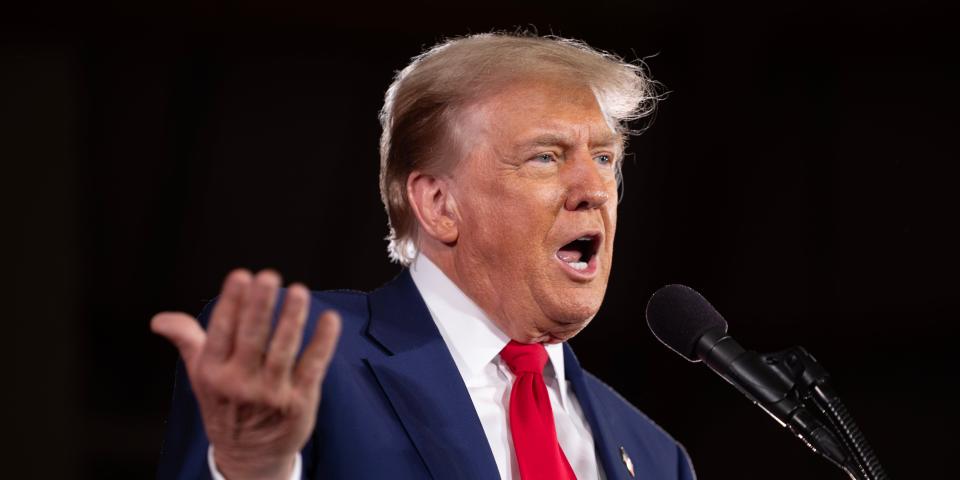Donald Trump reportedly wants to raise tariffs to pay for tax cuts

Donald Trump floated a proposal to hike tariffs in order to cut income taxes, sources told Bloomberg.
The Republican candidate has touted tariffs as a key part of his trade policy.
But income tax make up a much larger part of federal revenue than tariffs.
Donald Trump suggested tariffs could be increased as a way to lower US income tax, sources told Bloomberg.
The idea — floated during a Thursday meeting with House Republicans — is to cut taxes paid by individuals by raising rates on US imports. Trump also discussed tariffs as a negotiating tool over foreign actors, sources separately told CNBC.
The proposal expands on ideas about tariffs and trade wars voiced previously by the former president, who has made aggressive trade policy a cornerstone of his campaign. If elected again, Trump has pledged a universal 10% tariff rate on all US imports, though this might vary by country — China can expect rates as much as 60%, he has said.
But his earlier ideas were touted as a way to address trade imbalances with other economies, not as a way to boost revenue. While Thursday's "all-tariff policy" proposal was reportedly well received by Republican legislators, replacing even some income tax revenue through tariffs would be a monumental feat.
That's because tariffs make up just 2% of government receipts, according to the Office of Management and Budget. Individual taxes, meanwhile, were responsible for close to half of US revenue in 2023.
Criticism of the idea has already emerged, with NYU's School of Law professor David Kamin warning on X that it would hit low- and middle-income Americans the hardest.
Other analysts have broadly pushed against the embrace of tariffs and protectionist policy, voicing warnings about inflation and an explosion of trade wars, especially with China. By one estimate, such a conflict could emerge as soon as next year.
Trump has disputed that the duties would increase costs for US consumers.
Meanwhile, lowering income taxes comes as key parts of his 2017 tax cuts are set to expire. If Trump takes office in 2025, he's promised to extend the cuts.
But fiscal policy experts have warned that this would be a costly move, given the worsening outlook on federal debt. Extending the tax cuts would add $4 trillion to the US deficit, said Maya MacGuineas, President of the Committee for a Responsible Federal Budget.
If other tax cuts are extended, that number could reach $5 trillion, she told Bloomberg TV on Thursday.
Read the original article on Business Insider

 Yahoo Finance
Yahoo Finance 